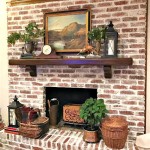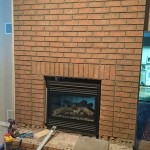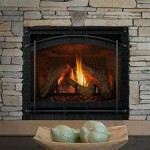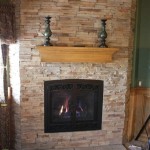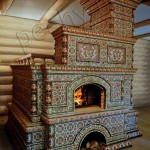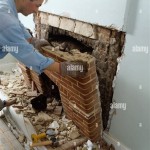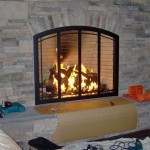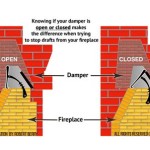Glass for Fireplace Doors: Maintaining Safety, Efficiency, and Aesthetics
Fireplace doors serve a crucial function in residential and commercial settings, providing a barrier between the open flames and the surrounding room. A key component of these doors is the glass, which not only offers a view of the fire but also contributes to safety, energy efficiency, and overall aesthetic appeal. The selection of appropriate glass for fireplace doors requires careful consideration of several factors, including heat resistance, durability, clarity, and compliance with safety standards.
The primary purpose of fireplace door glass is to contain sparks, embers, and potentially dangerous flames within the firebox. This prevents accidental fires caused by these elements escaping and igniting nearby flammable materials such as carpets, furniture, or draperies. Additionally, the glass shields individuals, particularly children and pets, from direct contact with the intense heat of the fire. By creating a secure barrier, the glass significantly reduces the risk of burns and other fire-related injuries.
Beyond safety, fireplace door glass plays a role in regulating the airflow within the fireplace system. This can enhance the efficiency of the fire by controlling the rate at which wood burns and the amount of heat that is radiated into the room. A well-sealed glass door helps to prevent drafts and minimize heat loss up the chimney when the fireplace is not in use. This contributes to improved energy efficiency and reduced heating costs, especially in colder climates. In order to maintain this efficiency, routine inspections and maintenance of the glass and surrounding seals are necessary.
The transparency and clarity of the glass are essential for enjoying the visual appeal of the fire. The glass should be designed to withstand high temperatures without becoming clouded, discolored, or distorted. Regular cleaning is necessary to remove soot and creosote buildup, which can obscure the view of the flames. Proper maintenance ensures that the fireplace remains a focal point in the room, providing warmth and ambiance.
Understanding Different Types of Fireplace Door Glass
The market offers various types of glass specifically designed for fireplace doors, each possessing distinct properties and suitability for different fireplace applications. The three most common types are tempered glass, ceramic glass, and borosilicate glass. Each type offers a different balance of temperature resistance, durability, and cost.
Tempered glass is a type of safety glass that has been subjected to a controlled thermal or chemical treatment to increase its strength compared to normal glass. This process creates compressive stress on the surface of the glass, which makes it more resistant to breakage and impact. If tempered glass does break, it shatters into small, relatively harmless pieces rather than sharp shards, reducing the risk of injury. While tempered glass is more affordable than other options, it has a lower heat resistance compared to ceramic and borosilicate glass. It is typically suitable for fireplaces that do not generate extremely high temperatures, such as those used with gas or electric inserts. Tempered glass will typically only withstand temperatures up to 400-500 degrees Fahrenheit.
Ceramic glass, also known as pyroceramic glass, is specifically engineered to withstand extremely high temperatures without cracking or shattering. It is made from a special type of glass-ceramic material that has a very low coefficient of thermal expansion. This means that it expands and contracts very little when exposed to heat. As a result, ceramic glass can withstand rapid temperature changes without being damaged. Ceramic glass is commonly used in wood-burning fireplaces, stoves, and other high-heat applications. It offers excellent clarity and allows for a clear view of the flames. Ceramic glass can withstand temperatures up to 1300 degrees Fahrenheit, making it ideal for wood-burning fireplaces, which can reach high temperatures.
Borosilicate glass is another type of heat-resistant glass known for its low coefficient of thermal expansion and high resistance to thermal shock. It is made from silica and boron trioxide, which gives it excellent chemical resistance and durability. Borosilicate glass is often used in laboratory glassware, cookware, and high-intensity lighting applications. While not as commonly used in fireplace doors as ceramic glass, it offers good heat resistance and clarity. Borosilicate glass can withstand temperatures up to roughly 500 degrees Fahrenheit. Thus, it may be best suited for gas fireplace inserts that don't output quite the same temperature as a wood-burning fireplace.
Key Considerations When Selecting Fireplace Door Glass
Choosing the right glass for fireplace doors involves evaluating several key factors to ensure optimal performance, safety, and longevity. These factors include glass dimensions, thickness, installation method, and compliance with safety standards. A proper evaluation of these elements will ensure that the chosen glass meets the specific requirements of the fireplace and provides a secure and efficient barrier.
Accurate measurements of the existing glass opening are crucial for ensuring a proper fit. The glass should be sized to fit snugly within the door frame, providing a tight seal to prevent air leaks and maintain optimal heat regulation. Incorrect dimensions can lead to gaps that allow sparks and embers to escape, compromising safety and reducing the efficiency of the fireplace. It is recommended to consult with a professional fireplace installer or glass supplier to obtain precise measurements and ensure that the glass is cut to the correct size.
The thickness of the glass is another important factor to consider. Thicker glass is generally more durable and resistant to breakage, particularly in high-heat applications. The appropriate thickness will depend on the type of fireplace, the expected operating temperatures, and the size of the glass panel. For wood-burning fireplaces, ceramic glass with a thickness of at least 3/16 inch is typically recommended. Thinner glass may be suitable for gas or electric fireplaces that generate less heat. Using the correct thickness will further increase the safety and efficiency of the fireplace.
The method of installation is also critical for ensuring the proper performance and safety of the fireplace door glass. The glass should be securely installed within the door frame using appropriate gaskets, clips, or other fastening hardware. The installation should create a tight seal to prevent air leaks and ensure that the glass is properly supported. Improper installation can lead to stress points on the glass, increasing the risk of cracking or breakage. It is recommended to follow the manufacturer's instructions carefully or to hire a qualified professional to install the glass.
Maintaining and Cleaning Fireplace Door Glass
Proper maintenance and cleaning are essential for preserving the clarity, efficiency, and longevity of fireplace door glass. Regular cleaning removes soot, creosote, and other debris that can accumulate on the glass surface, obscuring the view of the flames and reducing the amount of heat radiated into the room. Proper maintenance also involves inspecting the glass for signs of damage and addressing any issues promptly to prevent further deterioration. If left unaddressed, these issues could lead to premature failure of the glass, requiring costly repairs or replacement.
The frequency of cleaning will depend on the type of fuel used, the frequency of fireplace use, and the overall efficiency of the fireplace system. Wood-burning fireplaces tend to produce more soot and creosote than gas or electric fireplaces, requiring more frequent cleaning. As a general guideline, fireplace door glass should be cleaned at least once a month during periods of heavy use. More frequent cleaning may be necessary if the glass becomes heavily soiled or if the fireplace is used frequently.
The cleaning process should be gentle and non-abrasive to avoid scratching or damaging the glass surface. A soft cloth or sponge, along with a mild cleaning solution specifically designed for fireplace glass, is recommended. Harsh chemicals, abrasive cleaners, or scouring pads should be avoided, as they can scratch the glass and reduce its clarity. For stubborn stains, a specialized fireplace glass cleaner or a mixture of vinegar and water may be used. It is important to follow the manufacturer's instructions carefully when using any cleaning product. In addition, a dedicated fireplace scrub brush can be used to scrub away harder particles of soot and creosote.
Before cleaning the glass, ensure that the fireplace is completely cooled down. Never attempt to clean the glass while it is hot, as this can cause it to crack or shatter. Use a soft cloth or sponge to apply the cleaning solution to the glass surface, working in a circular motion to loosen the dirt and grime. Rinse the glass thoroughly with clean water and dry it with a clean, lint-free cloth. For best results, consider using a squeegee to remove excess water and prevent streaks.
In addition to cleaning, regular inspections of the fireplace door glass are essential for identifying any signs of damage, such as cracks, chips, or discoloration. Any damage should be addressed promptly to prevent further deterioration and maintain the safety and efficiency of the fireplace. Small cracks or chips may be repaired using a specialized glass repair kit, while more extensive damage may require replacement of the entire glass panel. Consult a qualified professional for assistance with repairs or replacements.

Standard Size Masonry Fireplace Doors Fixed Frame

Glass Fireplace Doors

Fireplace Glass Doors Vs Screens Full Service Chimney

Pleasant Hearth Arrington Medium Glass Fireplace Doors Ar 1021 The Home Depot

Why Should I Get A Glass Fireplace Door Installed On My

Grandseal Praire Style Masonry Fireplace Door With Ceramic Glass

Pleasant Hearth Arrington Fireplace Door Doors

The Value Of Glass Doors For Your Fireplace Royal Oak Mi

Fireplace Glass Doors Vs Screens Full Service Chimney

Pleasant Hearth Fenwick Large Glass Fireplace Doors Fn 5702 The Home Depot

